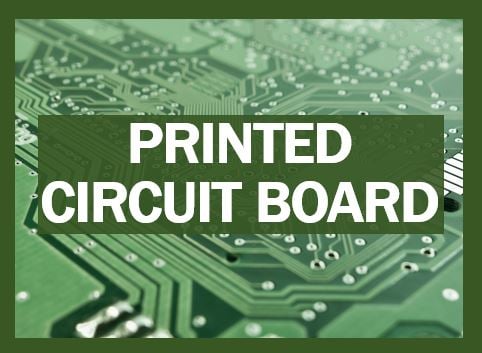
Electronic devices contain many components, like microchips and resistors. Each of these components must be connected to one another in order to create a functional device. To accomplish this task, engineers use Printed Circuit Boards (PCBs).
A PCB manufacturer produces different types of circuit boards with various sizes, shapes, materials, and components. They are used in different types of applications like consumer electronics, medical devices, telecommunications, and automotive products. In this article, we'll explore the world of PCBs and how they are used in the electronic industry. We'll explore what it is, how it works, different classes of PCBs, and associated costs.
What Is a Printed Circuit Board?
A Printed Circuit Board is a complex structure with electrical circuitry. It consists of two or more layers of copper foil laminated between a non-conductive substrate material. The copper foil layer provides electrical connections between components. It also acts as a heat sink to dissipate unwanted heat energy from the board during operation. In contrast to a regular circuit board, the PCB does not require physical wires or cables for electrical connection.
PCBs are made of dielectric core material, which is made from a variety of materials like glass epoxy, paper-phenolic composite, and FR4. Different layers of copper foil are laminated between these materials to create the desired electrical connections on the board. In some cases, an additional layer is applied for insulation.
How Does a PCB Work?
The components that make up the PCB are connected by electrical pathways, also known as "traces." These traces are typically made of copper and connect various components to one another. During manufacturing, the PCB is populated with component parts using a combination of automated machines and manual labor. The entire assembly process can take several days, depending on the complexity of the board.
Once the board is populated, it undergoes a series of tests to ensure that all components are functioning properly. This includes visual inspection, X-Ray imaging, and electrical testing. Once the board passes all tests, it is then ready to be used in an electronic device.
Different Classes of PCBs
PCBs can be classified into classes 1, 2, and 3. Class 1 boards are single-layer, non-flexible, and have no insulation layers. Class 2 boards are double-layer and also do not have any insulation layers. Class 3 boards are multi-layer, flexible, and can contain up to 12 layers of copper foil with an insulation layer between each.
Types of PCBs
There are different types of PCBs. They include:
Rigid Boards
These are the most common type of boards. They are made of materials like fiberglass and epoxy glass with copper tracks. Rigid boards provide a strong foundation for components that can withstand high temperatures, vibrations, and shocks.
Flexible Boards
These boards are made of flexible materials such as polyimide or polyester with either etched copper tracks or copper foil. They are used for applications where the board needs to be bent, folded, or moved around easily.
Metal-Core PCBs
These boards are similar to rigid boards but are made with a metal core instead of fiberglass or other non-conductive materials. They provide better thermal resistance and can be used in applications that require high temperatures.
Hybrid PCBs
These boards combine the features of both rigid and flexible boards. They are typically made with layers of rigid and flexible material sandwiched together, with copper tracks etched on each layer. They are used for applications that require both flexibility and rigidity.
Conclusion
Now that you know the basics of printed circuit boards, you can start to explore their various types and applications. With the right knowledge and experience, you can make the most out of PCBs in your own projects. Keep learning and experimenting with new technologies to stay updated on new developments in this ever-evolving field.
Interesting Related Article: "Benefits of using printed circuit boards for your business & find the best PCB maker"
No comments:
Post a Comment